The Only Shot That Matters: How One Mother’s Photo Exposes the Truth of an Unfolding Measles Epidemic
As the measles spread, a family’s hospital image lays bare the unheeded crisis—and the acute need for pictures of cause and consequences.
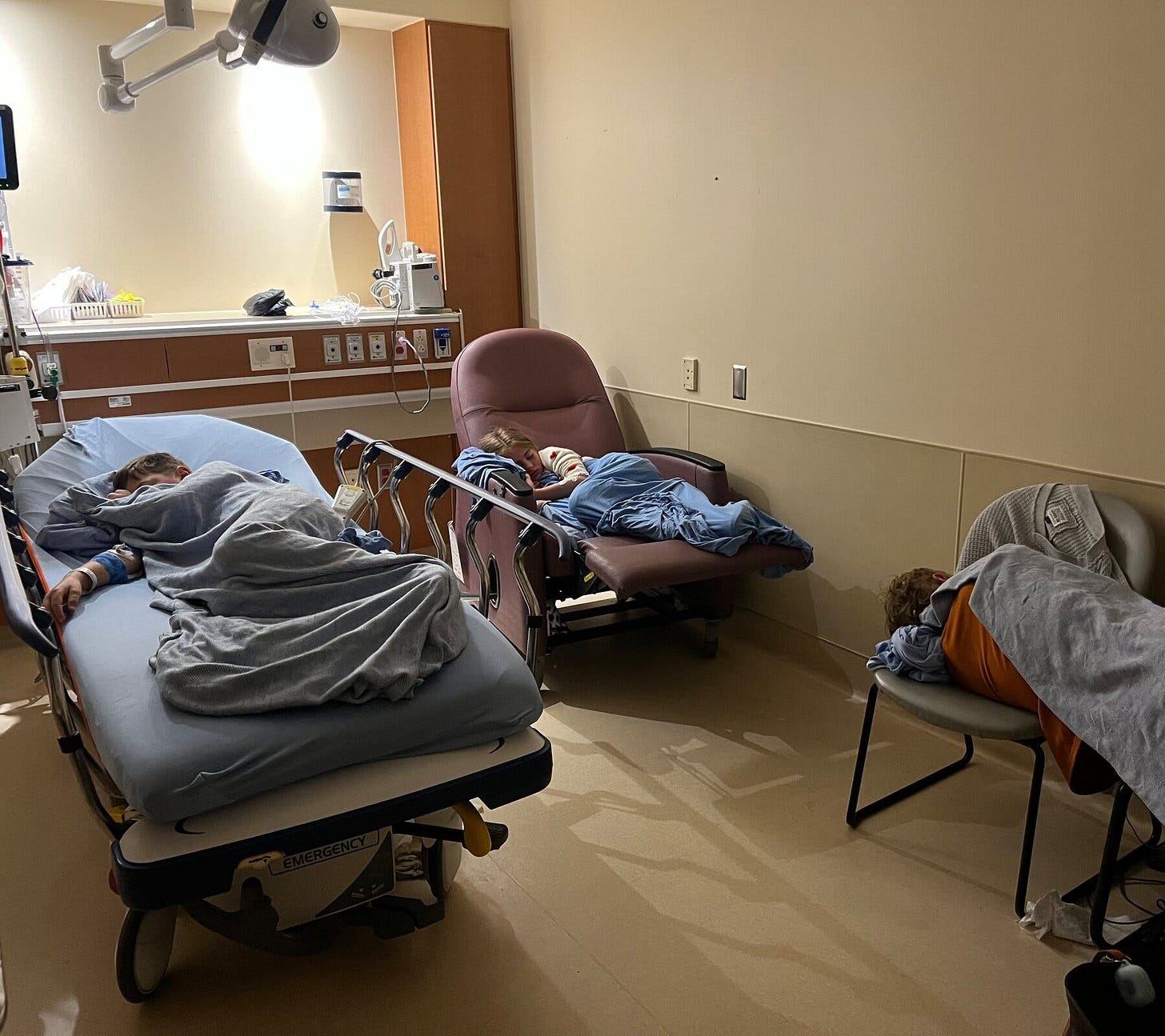
This is the only published photograph I've found that shows what America's worst measles outbreak in years actually looks like: three children—Garner, Arden, and Tucker—in a hospital room in Lubbock, Texas. Not taken by a professional photojournalist embedded with a major news organization. Not part of a media surge to expose a contagion. Shot by their mother, Carrollyn Timmons, whose world had just collapsed.
One image. In an outbreak that has already sickened over 1300 people nationwide (approximately 92% unvaccinated), with 88% of those cases in Texas alone.
While these children struggled to breathe, while their parents watched preventable disease ravage their family, America's media has mostly served up the most benign or generic imagery: stock vaccine photos, syringes, speckled arms, and measles molecules.
And, if I see it one more time, I think I'm going to scream—that makeshift plywood sign in Seminole, Texas, with stenciled lettering reading "Measles Testing."
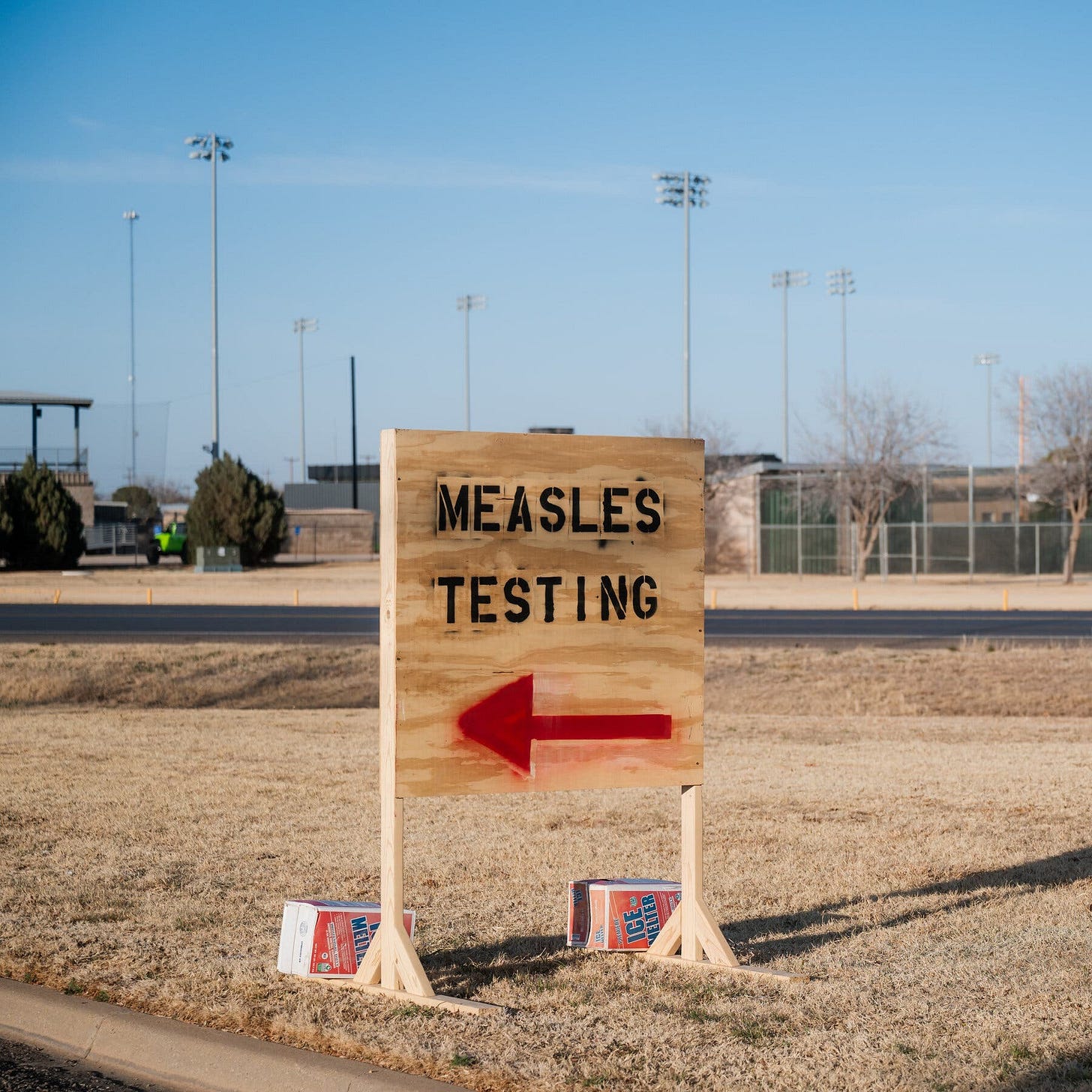
When Belief Meets Reality
The Timmons family story reads like a parable about the cost of vaccine skepticism. Kiley Timmons, a chiropractor who had treated his rural Brownfield community with alternative medicine for over a decade, believed measles mainly was a mild "rites-of-passage" illness—the nostalgic childhood disease from old TV shows.
Then reality arrived with devastating precision. Four of their children ended up hospitalized. Kiley himself suffered dangerous oxygen drops and severe rashes requiring intensive care. The four children developed high fevers, pneumonia, and respiratory distress. Even after discharge, they faced lingering effects: cluster headaches, eye sores, recurring infections from measles-induced "immune amnesia."
"I feel like I've been lied to," Kiley told the New York Times.
But where are the images documenting the newly stricken? Where is the imagery that might make other parents reconsider their choices? We have one—shot by a desperate mother in a hospital room, probably with her phone.
Grief as Photo Op
While media outlets recycled the same plywood sign, one man understood the power of being photographed at ground zero: Robert F. Kennedy Jr., the health secretary and vaccine conspiracy theorist.
Kennedy traveled to Seminole in April to attend 8-year-old Daisy Hildebrand's funeral—the second child to die in this outbreak. His social media post afterward was a masterpiece of calculated sympathy: "It was a heartbreaking day, but I felt so much warmth and love from the entire Mennonite community."
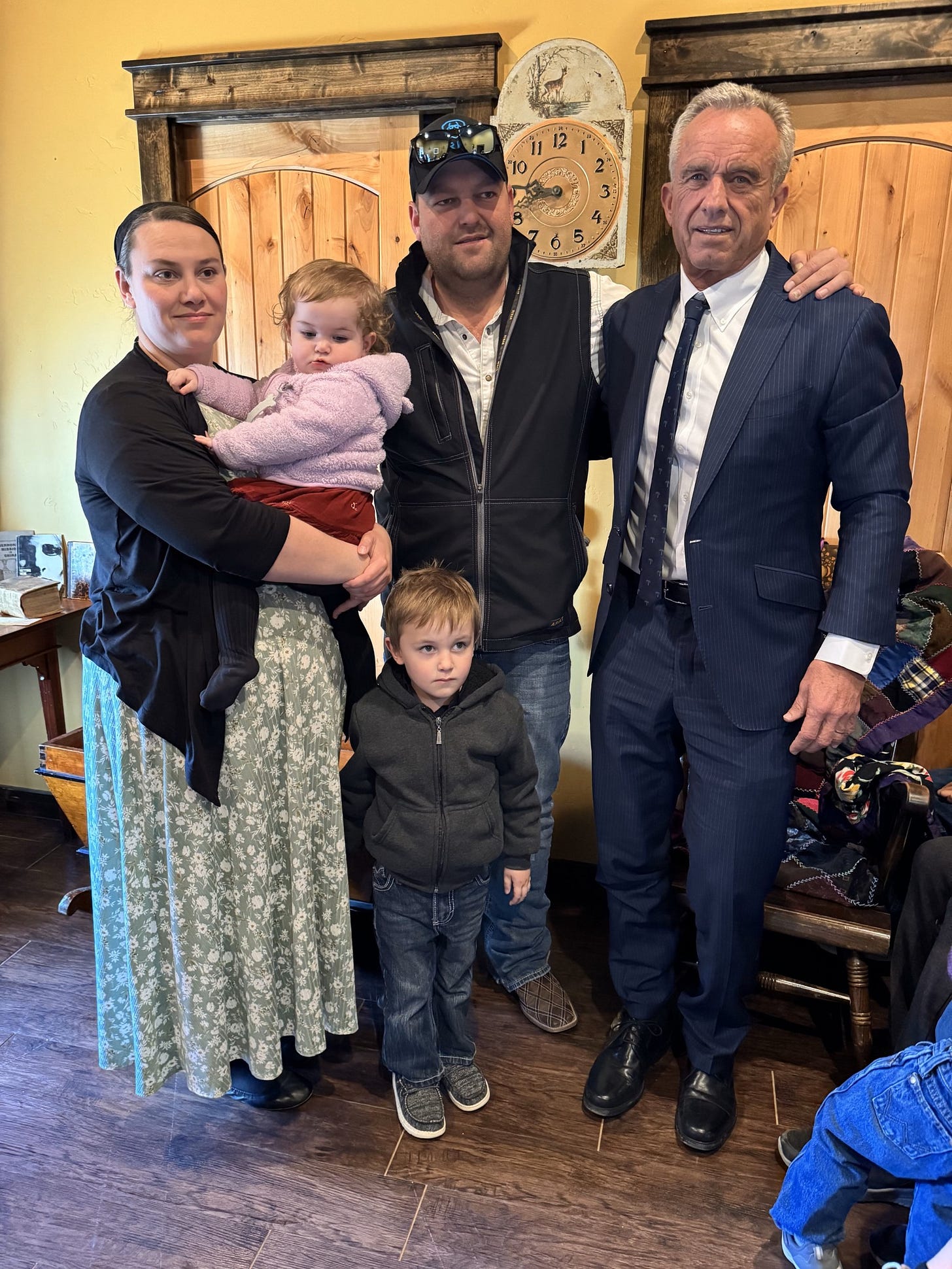
The visit yielded exactly the imagery Kennedy needed: an anti-vaccine politician transformed into a compassionate healer, posed with grieving families and local doctors. Never mind that Kennedy had spent years undermining confidence in the very vaccines that could have prevented these deaths. In the carefully choreographed theater of his visit, he was recast as a witness to tragedy, not its architect.
Even Daisy's father, Peter Hildebrand—whose daughter had just died from measles—remained unmoved. "The [MMR] vaccine ain't worth a damn," he told The Mail, despite the CDC confirming his daughter's death was caused by the virus. Of Kennedy's visit: "He didn't mention vaccines once. But he was the nicest man I ever met."
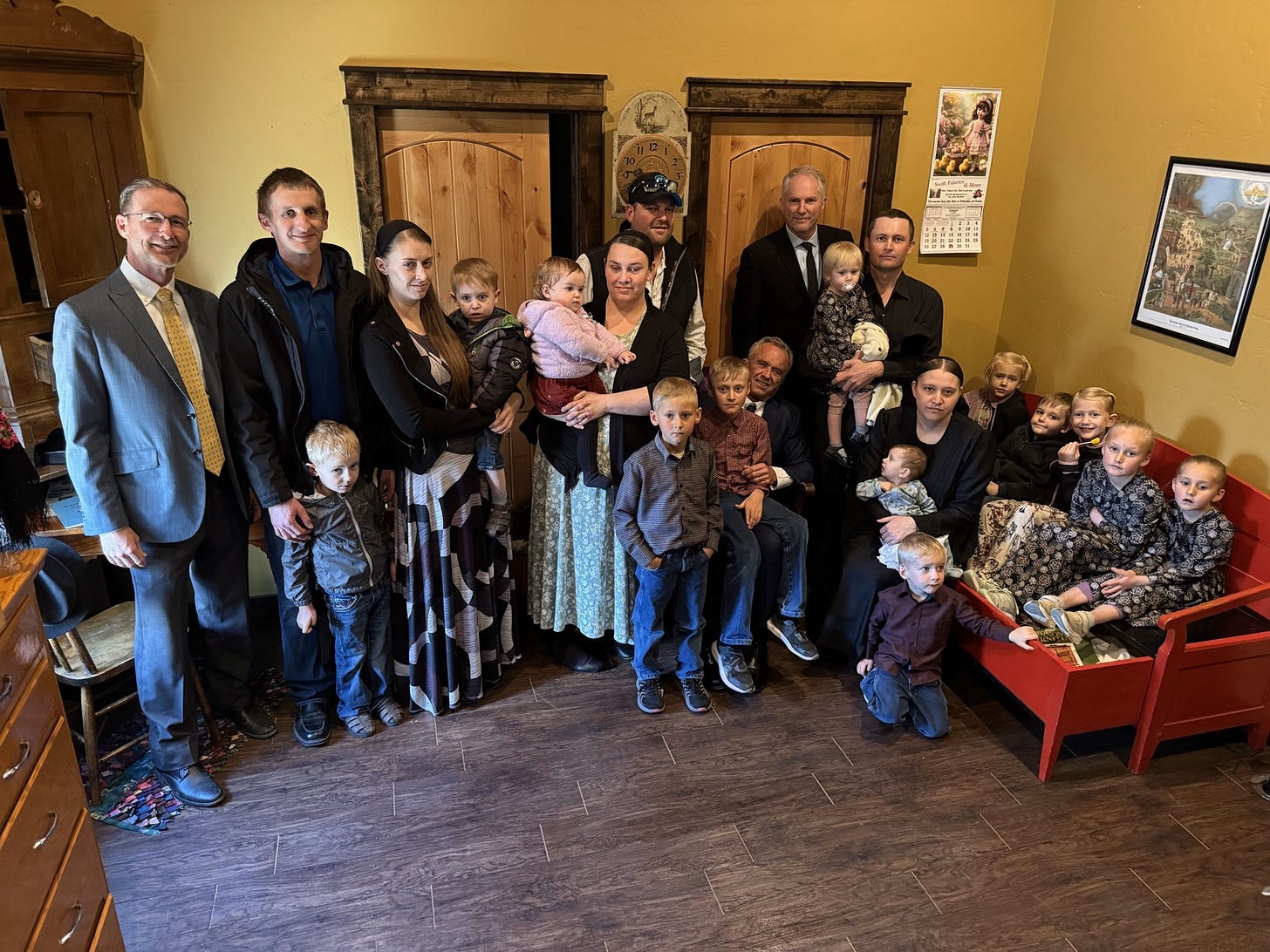
The photographs tell their own story: Kennedy, somber and sympathetic, is enveloped by families whose trust in his anti-vax rhetoric has cost them a child.
The Pictures We Need
Covering disease outbreaks has never been easy. Patient privacy, access restrictions, and the challenge of depicting invisible pathogens—these are real constraints that complicate visual journalism. But what we're witnessing goes beyond logistical hurdles to something more troubling: a retreat from the kind of bold, connective visual storytelling that public health crises demand.
The media's current approach—stock photos of vaccinations, that ubiquitous plywood sign—reflects a broader hesitancy to engage with the political dimensions of this outbreak. Meanwhile, the captains of vaccine skepticism understand image-making perfectly. Kennedy's Seminole photo op was a clinic in visual messaging: transforming from vaccine opponent to grieving witness.
It wasn't always the case. During the 1962-1965 measles epidemic, LIFE Magazine didn't shy from making the stakes visceral and immediate, publishing this cover of a pregnant woman confronting readers with her powerful look of trust.
Today's media needs to reclaim that stance. This means more than just documenting victims and treatments—though we fiercely need more of both. It means visually connecting disease outbreaks to their political catalysts: the anti-vaccine propaganda, the anti-science disinformation campaigns, the systematic destruction of public health infrastructure. And it means showcasing the perpetrators' intent, as we see in this image taken while Kennedy was persistently obfuscating and lying to a Senate health committee.
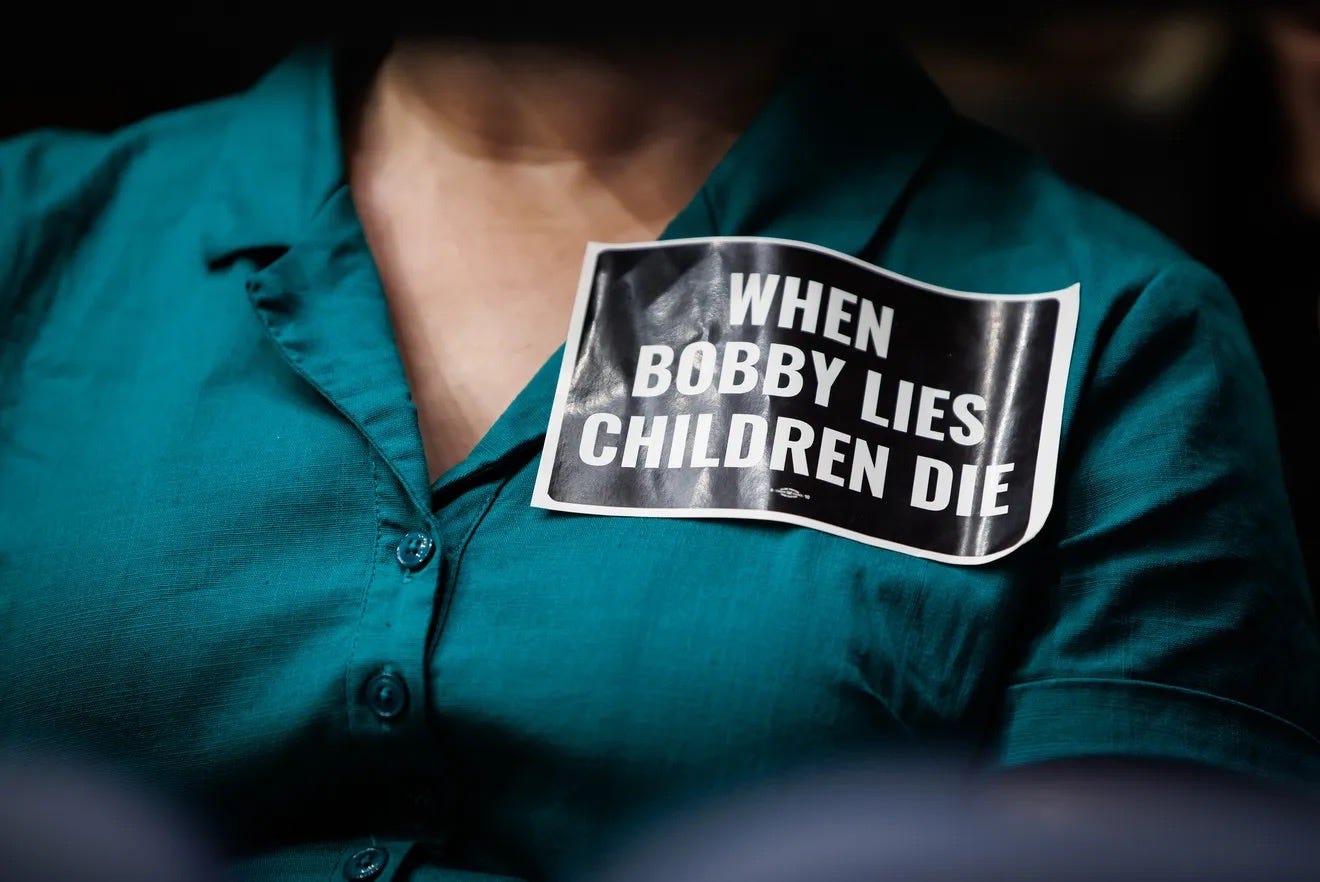
The current outbreak is growing, not shrinking. Rather than being intimidated by far-right attacks on scientific institutions, media organizations should be expanding their visual creativity not just to note, but to banner the existential threat to the public health ecosystem—from hospital ICUs to congressional hearings, from grieving families to the activists fighting to prevent more loss and affliction.
One mother's hospital photos shouldn't carry the entire weight of documenting this crisis. Carrollyn Timmons' image stands alone not because the story is rare, but because it’s not being vigorously pursued or contextualized. The measles shot we need to see isn't the vaccine going into arms so much as the aftermath of refusing it—and the political forces that made that refusal possible.
Thank you for visiting Reading the Pictures. Despite our visually saturated culture, we remain one of the few sources for analyzing news photography and media images. This post is public, so feel free to share it.
To receive new posts and support our work, consider becoming a free or paid subscriber. As a non-profit organization, your subscription is tax-deductible.



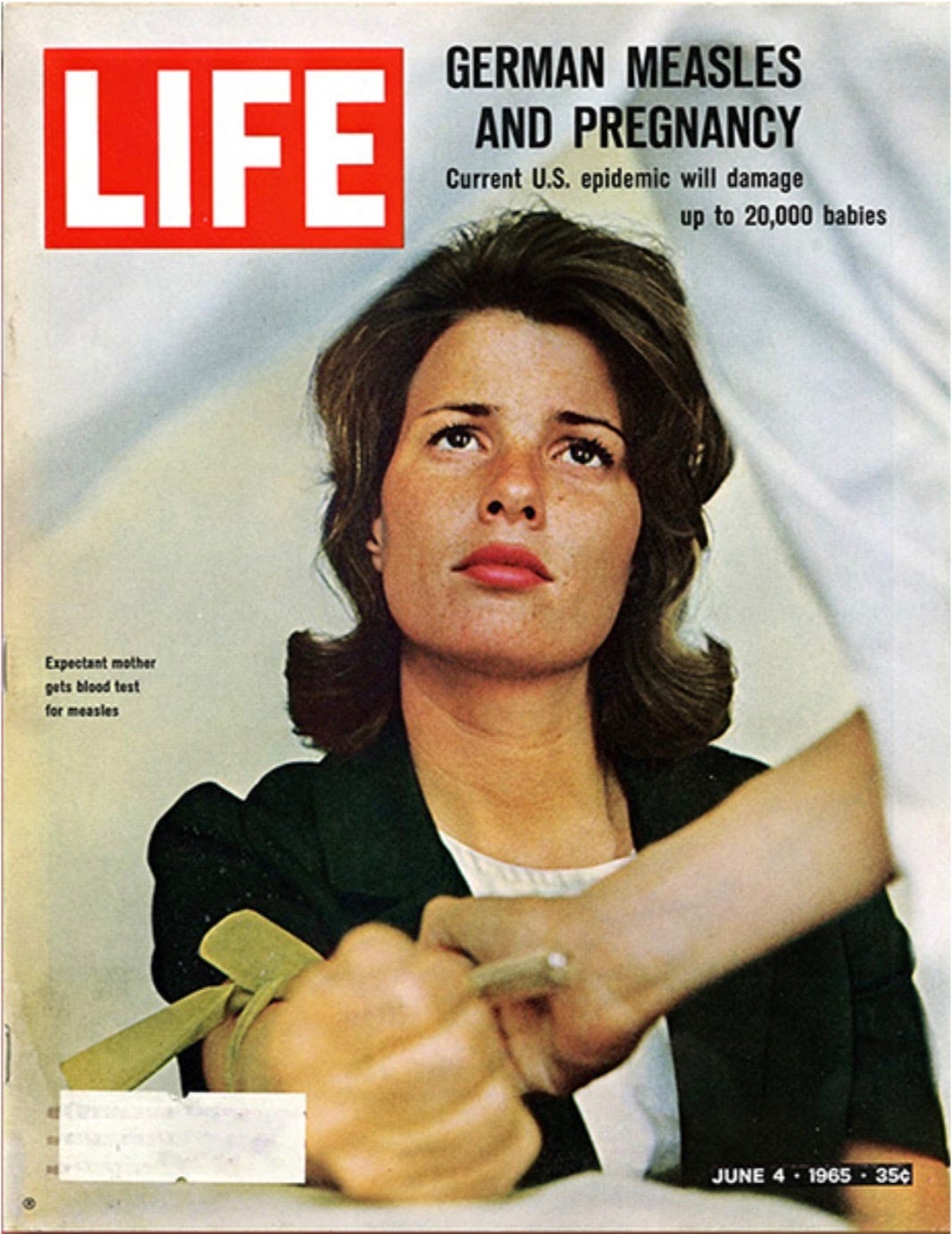
How can RFK sleep at night knowing that he has caused this epidemic 😱